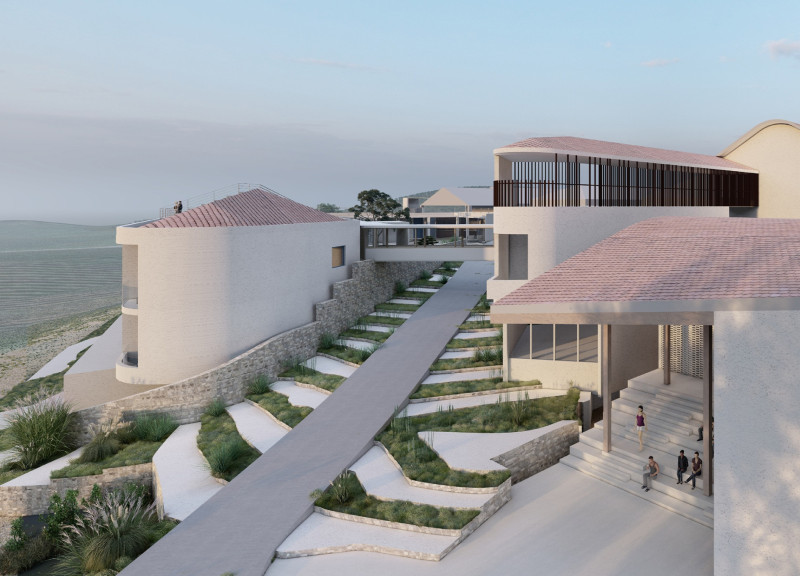5 key facts about this project
The location of the hotel is on a slope with an elevation difference of 8 to 12 meters. It offers views of a vineyard to the southwest, while a winery and barrel room can be found to the north. The design connects hospitality functions with the surrounding landscape. This connection enhances the overall experience for guests within a thoughtful and cohesive environment.
Design Concept
The focus of the design rests on three main principles: maximizing the landscape value of the vineyard, reflecting the regional architectural context, and maintaining the site’s original characteristics. These principles inform the overall layout and design choices, ensuring an alignment between the architecture and its natural setting.
Layout and Functional Elements
A clear height plane arranges the various functions throughout the hotel. The design includes an enclosed courtyard that features the reception and guest accommodation areas. This setup creates a sense of community while ensuring privacy for the 39 guest rooms, which encompass different types such as standard, superior, suite, and master suite. Each room is equipped with a balcony, allowing guests to appreciate the views of the vineyard.
Connection to Outdoor Spaces
The design includes a sky bridge that links the guest rooms with public areas, promoting interaction between recreational spaces and the multi-functional hall, along with the restaurant. The restaurant serves as a gathering place, encouraging social interaction. It features folding doors that open to the outdoor area, connecting the dining experience with views of the vineyard. This design choice emphasizes the flow between indoor and outdoor living.
Materials and Aesthetic Considerations
The materials selected for the project include concrete, glass, brick, paint, wood, stone, and red flat roof tiles. These materials provide both support and visual consistency throughout the hotel. The choice of traditional roof features helps the new construction relate better to the existing surroundings, creating a harmonious appearance with the landscape.
In addition to the guest rooms and dining areas, outdoor recreational facilities are an important aspect of the design. There are both indoor and outdoor swimming pools that encourage guests to enjoy the natural surroundings. These leisure spaces are arranged to foster relaxation, contributing to a welcoming and enjoyable atmosphere for visitors. Each of these features highlights a balanced approach to architecture that emphasizes both function and aesthetics.






















































